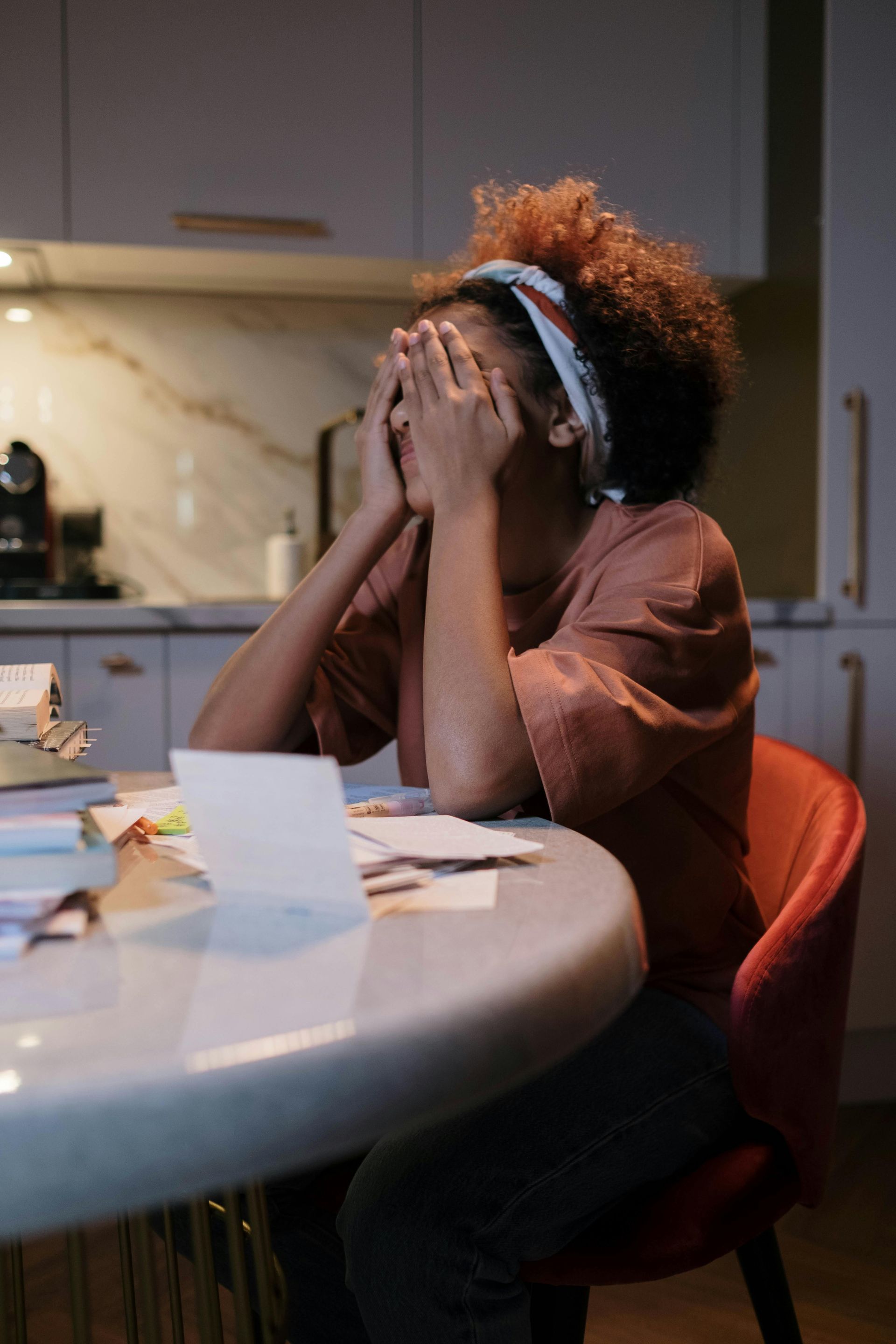5 Techniques to Help You Relax More
Learn more about relaxation and techniques for slowing down.
In American culture, relaxation is considered a luxury, something only those privileged enough to have sufficient resources get to enjoy. However, relaxation is actually an important contributor to our mental and physical health. When we don’t allow ourselves to take time to unwind, the harmful effects of daily stressors begin to accumulate and can contribute to psychological and physical maladies like depression, memory loss, heart disease, stroke, and diabetes (just to name a few). Relaxing gives our bodies and minds a chance to recover from stress and live our best lives.
Physiologically, relaxation is the activation of our parasympathetic nervous system. This activation slows our heart rate, lowers our blood pressure, reduces muscle tone, slows our breathing, and prepares our bodies for rest and rejuvenation. Luckily, there are a number of ways we can activate our parasympathetic nervous systems and help our bodies recover from the damages of our stressful lives.
Here are a few examples:
Progressive Muscle Relaxation
Progressive Muscle Relaxation (PMR) is a technique that helps us learn what it feels like when our muscles are tense versus when they are relaxed so that we can notice the tension when we are stressed out and willfully release it (Cawthorn & Mackereth, 2010).
In general, the steps to PMR are the following:
- Minimize distractions and interruptions (i.e. turn off your cell phone and find a quiet place).
- Lie down and make yourself as comfortable as possible.
- Begin with 1 muscle group, such as your feet. Inhale as you tighten the muscles in your feet and hold for 6-10 seconds then relax and exhale for 6-10 seconds. Be sure not to squeeze so hard that you cause cramping or discomfort.
- Repeat this step once more before moving on to another muscle group (such as the calves).
- Repeat steps 3 and 4 as you work your way up your body through different muscle groups (feet, calves, thighs, abdomen, hands, arms, back, then face).
Meditation
Meditation has been used as a relaxation tool for centuries and the current body of research supporting the positive benefits of meditation is immense. Some of the observed effects of meditation include slower heart rate, muscle relaxation, increased cerebral blood flow, increased production of melatonin, and greater activation of brain regions associated with non-verbal, intuitive, and spatial processing (Perez-De-Albeniz & Holmes, 2000). There are many kinds of meditation and different people will benefit differently from each, so it might be helpful to try out more than one kind to see what works best for you.
Massage
Massage is often viewed as a particularly indulgent luxury, but studies show it’s a highly effective therapeutic technique. For example, massage has been associated with reductions in pain and anxiety, and improvements in mood, relaxation, and sleep in patient populations (Dreyer et al., 2015; Jane et al., 2011).
There are many forms of massage therapy, and each form is suited for different needs. For example, if your goal is simply relaxation, a Swedish massage might be best for you. Whereas if you are in need of pain relief, a deep-tissue massage could be the way to go. Before scheduling a massage session, it might be helpful to check out what your options are and discuss what type of massage will best meet your needs with your massage therapist.
Yoga
Yoga is another highly effective relaxation technique that has been in practice for centuries (De Benedittis, 2015). Yoga is sometimes used as exercise, but it doesn’t necessarily have to be. Often, yoga functions more as a moving meditation, giving your mind a specific focus to help quiet the internal chatter as you become absorbed in synchronizing your movements with your breath.
Research has shown that yoga can help reduce pulse rate, and blood pressure, both of which are important physiological changes for relaxation (Jain et al., 2010). Yoga has also been shown to reduce other physiological symptoms of stress such as inflammation and the production of stress hormones (Ross & Thomas, 2010).
Music and Sounds
Listening to music is also well-documented as a helpful therapeutic technique for reducing stress. For example, listening to music has been shown to affect aspects of your physiology such as lowering your heart rate, reducing blood pressure, and limiting stress hormone levels (de Witte et al., 2022).
The neural mechanisms by which music improves mood, relaxation, and well-being are not well understood. One possibility involves the synchronization of our bodies and our brain activity with musical qualities such as rhythm and tempo (Kim et al., 2018). For example, you’ve probably noticed yourself involuntarily tapping your foot to the beat when listening to a song. This phenomenon is known as “entrainment” and is essentially the rhythm of the music influencing the rhythmic activity within your motor system.
Summary
In today’s fast-paced and often stressful world, taking time to relax is more important than ever. Without allowing our parasympathetic nervous system to take over for a little bit and give our bodies a break from the damaging effects of prolonged stress, we can end up exhausted, depressed, and even physically ill. There are many effective techniques for unwinding and reducing stress that can be simple to incorporate into our daily lives. Regardless of the relaxation method you choose, it is important to use it regularly, especially if you have many stressors in your life.
References
● Cawthorn, A., & Mackereth, P. A. (Eds.). (2010). Integrative hypnotherapy: complementary approaches in clinical care. Elsevier Health Sciences.
● De Benedittis, G. (2015). Neural mechanisms of hypnosis and meditation. Journal of Physiology Paris, 109(4–6), 152–164.
● de Witte, M., Pinho, A. da S., Stams, G. J., Moonen, X., Bos, A. E. R., & van Hooren, S. (2022). Music therapy for stress reduction: a systematic review and meta-analysis. Health Psychology Review, 16(1), 134–159.
● Dreyer, N. E., Cutshall, S. M., Huebner, M., Foss, D. M., Lovely, J. K., Bauer, B. A., & Cima, R. R. (2015). Effect of massage therapy on pain, anxiety, relaxation, and tension after colorectal surgery: A randomized study. Complementary Therapies in Clinical Practice, 21(3), 154–159.
● Jain, S., Jain, M., & Sharma, C. S. (2010). Effect of yoga and relaxation techniques on cardiovascular system. Indian Journal of Physiology and Pharmacology, 54(2), 183–185.
● Jane, S. W., Chen, S. L., Wilkie, D. J., Lin, Y. C., Foreman, S. W., Beaton, R. D., Fan, J. Y., Lu, M. Y., Wang, Y. Y., Lin, Y. H., & Liao, M. N. (2011). Effects of massage on pain, mood status, relaxation, and sleep in Taiwanese patients with metastatic bone pain: A randomized clinical trial. Pain, 152(10), 2432–2442.
● Kim, S., Gäbel, C., Aguilar-Raab, C., Hillecke, T. K., & Warth, M. (2018). Affective and autonomic response to dynamic rhythmic entrainment: Mechanisms of a specific music therapy factor. The Arts in Psychotherapy, 60, 48–54.
● Perez-De-Albeniz, A., & Holmes, J. (2000). Meditation: concepts, effects and uses in therapy. International Journal of Psychotherapy, 5(1), 49–58.
● Ross, A., & Thomas, S. (2010). The health benefits of yoga and exercise: A review of comparison studies. Journal of Alternative and Complementary Medicine, 16(1), 3–12.


